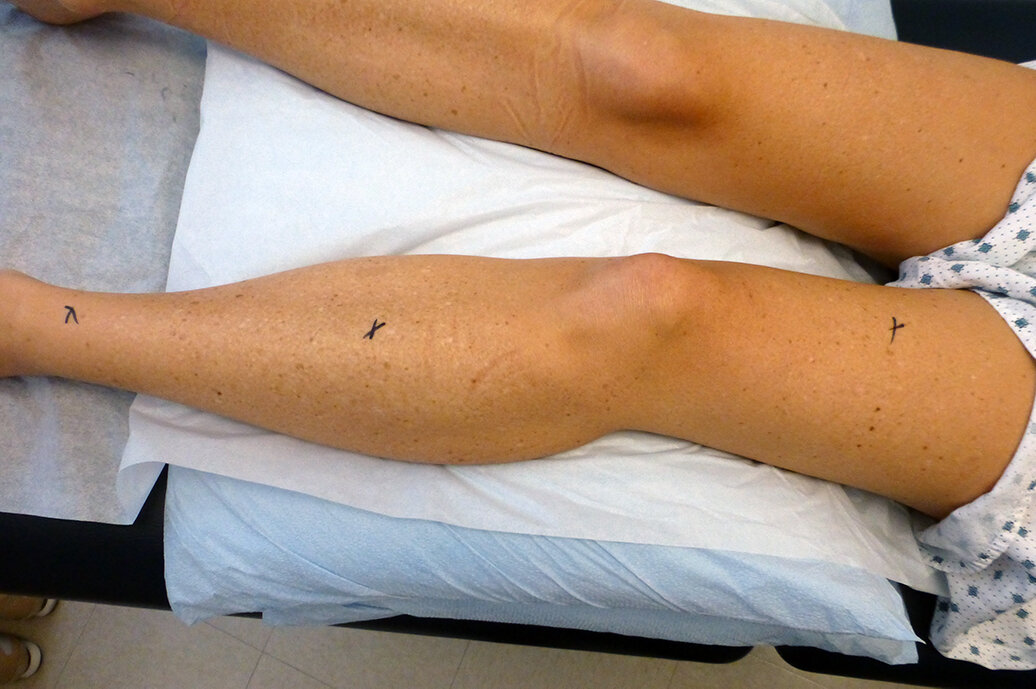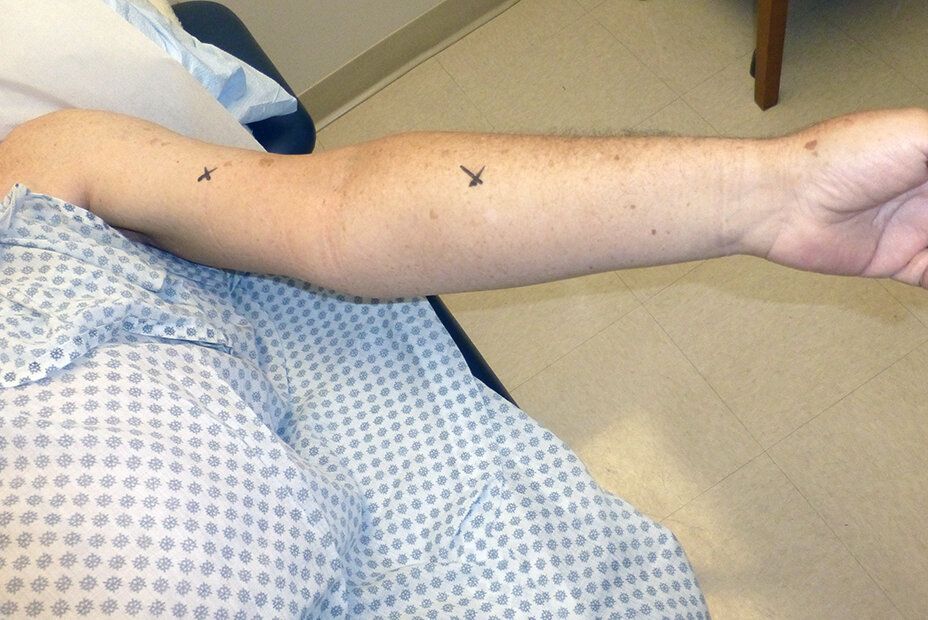Skin Care
Keeping affected skin clean, moisturized, and dry is important for anyone with lipedema and may be require care one or more times per day. Care for the feet and the spaces between the toes, skin folds, and damaged skin is especially important for reducing the risk of infection.
Skin care includes:
Removing any compression garments.
Measure limb size, if necessary. See Limb Measurements.
Washing and drying the skin, with extra attention to drying between the toes and inside any skin folds.
Inspecting the skin for redness or other signs of infection (see Fungal Infections), changes in skin texture or color, tissue fluid seeping through the skin in an area that has not had weeping before, new wounds, or warty growths (papillomas).
Check the fingernails and toenails for signs of infection—such as redness or soreness—or ingrown nails. Consider having a podiatrist or other foot care professional trim the toenails regularly, especially nails thickened by a fungal infection.
Moisturizing the skin with lotion or cream to prevent the skin from getting overly dry and cracked. Apply moisturizer once or twice a day, as needed, stroking in the direction of the lymph flow.
Applying topical medications for preventing or treating skins conditions. For example, applying cream, powder or spray medication for athlete’s foot or jock itch, or drying powder.
Limb Measurements
Tracking limb measurements provides useful information for managing lymphedema or lipedema. Measurement in one or two places per limb is faster and easier than the more detailed measurements made by a therapist or fitter.
Note: procedures are provided for arm and leg measurements only. Check with your lymphedema therapist about measuring other affected body parts.
Measurements can help you:
Identify any changes in limb size that could indicate an infection or other issue.
Be sure your compression garments fit properly. Compression garments that are too tight can be harmful and garments that are too loose are not protective or beneficial.
Therapists measure in centimeters (even in the US). Ask your lymphedema therapist where you can get a fitter’s tape measure. If you are using a ruler marked in inches, the conversion factor is 1” = 2.54 cm.
You will need the following equipment:
A cloth tape measure or a specialized tape measure sold by lymphedema supply companies.
A washable marker, ballpoint pen, or eyebrow pencil for marking positions.
A calculator for comparing past and present measurement values.
Measurement guidelines:
Measure at the same time of day (morning is best) without compression.
Have your limb be in the same position every time.
Be consistent about how you position the tape and take the measurement.
Measurement locations for arms and legs are given below.
Leg Measurement Locations
For the leg:
1. Measure the ankle.
2. Measure the largest part of the calf.
3. Measure the mid-point of the thigh.
Figure 1: Leg Measurement Locations
Arm Measurement Locations
For the arm:
1. Measure the midpoint of the forearm.
2. Measure the midpoint of the upper arm.
Figure 2 Arm Measurement Locations
Fungal Infections
Athlete’s foot, jock itch, nail fungus, and yeast are fungal infections. Athlete’s foot causes dry cracked skin of the toes and soles of the feet, allowing bacteria to enter the body and increasing the risk of cellulitis.
Symptoms of athlete’s foot include red, dry, flaking or scaly skin, itching and pain, cracking skin between the toes, blisters or pustules (small raised areas containing pus), and weeping sores. Treatment of athlete’s foot typically involves over-the-counter antifungal ointments such as Lamisil, Lotrimin, Micatin, or Whitfield’s ointment. If these are not effective, a prescription-strength anti-fungal ointment may be required.
Jock itch causes a discolored rash on the groin, buttocks, and inner thigh areas, accompanied by itching. Anti-fungal cream or spray, good hygiene, and loose-fitting cotton underwear are used to treat this condition.
Nail fungus symptoms include nails that are thickened, brittle, distorted, and have a foul odor. Nail fungal infections can persist indefinitely if not treated and can spread to the skin. Fungus can be difficult to cure without prescription-strength medication.
Yeast infections of the skin often occur in warm, moist environments such as breast folds, armpits, large abdominal skin folds, and hip bends. Yeast infections look like diaper rash and can be identified by redness and a characteristic pattern where each larger red bump (lesion) is surrounded by numerous smaller red bumps (satellite lesions).
Discuss all infections with your primary care provider, podiatrist, or dermatologist for the best form of treatment.
By Emily Iker, MD
Portions adapted from Lymphedema and Lipedema Nutrition Guide, Lymph Notes 2016 by permission of the publisher.
[i] “A Guide to Lymphedema” by K. D. Gordon and P. S. Mortimer. Expert Rev Dermatol. 2007;2(6):741-752.


